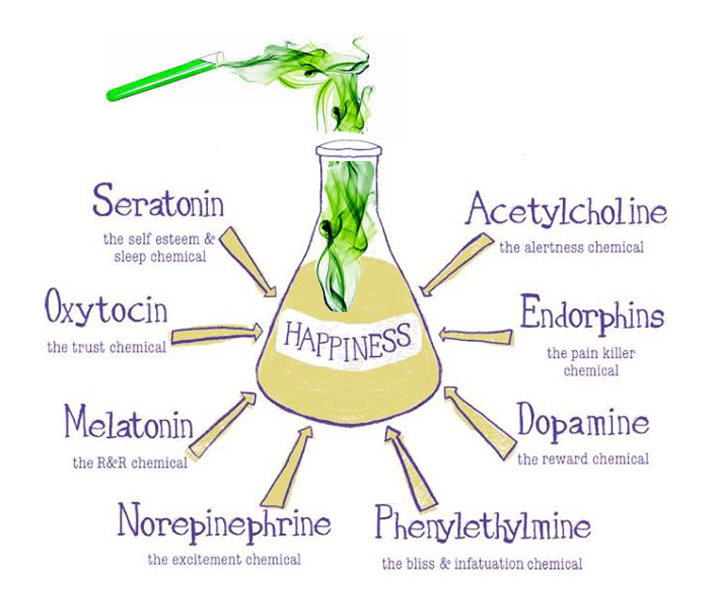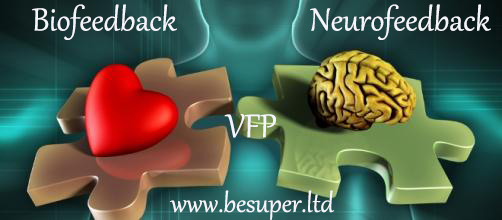What is HRV?
Heart Rate Variability is the variation in the time interval between consecutive heartbeats in milliseconds; and the greater the difference the better! Your heart has electric pulses charging much more than 1 beat per second and the more they vary (go up and down) the higher your HRV. In a human heart without autonomic input or vagal brake, the resting rate would be about 100 beats per minute. However, during resting conditions, the parasympathetic influence is dominant and the heart rate is typically closer to 70 beats per minute. When someone is experiencing constant anxiety and stress then the ‘parasympathetic brake’ is less effective because the sympathetic (fight or flight) nevous system is activated – and such people have higher heart rates and lower HRV.
Why is HRV such an effective measure?
HRV allows observation of the specific frequencies resulting from the fluctuations in heart rate and blood pressure, and provides insight to autonomic function. HRV is a very effective method used to help diagnose cardiovascular disease (myocardial infarction, congestive heart failure, coronary artery disease, hypertension, and non-cardiovascular disease (stroke, diabetes, alcoholism, cancer, glaucoma, anxiety and stress etc).
- High HRV is an indication of healthy autonomic and cardiovascular response.
- Low HRV may indicate that the sympathetic nervous system is not allowing the ‘vagus brake’ to function as it should.
HRV may be used as a tool to assess levels of stress. It may also be used to monitor any improvements. This is significant for ‘therapeutic education’ as it provides objective assessment criteria.
More information:
Humans are creatures of habit and create patterns and cycles of thoughts, actions and emotions that, in the most part (sub-consciously), become automatic – they define how you ‘normally behave / react’ to a situation or environment.
HRV (Heart Rate Variability) may be used by athletes to track and monitor their bodies reaction to rest, recovery, sleep and physical exercisee and training. HRV will show you if you are ready for an intense session or whether you should take it easy or rest. HRV can also be used as a tool to better balance your thoughts and emotions so you can focus better, be more creative and perform at your best.
HRV tools monitor and provide guidance on focused breathing; they influence the vibrating frequencies of the nervous system, which in turn affect the frequencies of the brain and all other tissues and hormones. Increasing HRV automatically increases parasympathetic tone, and using HRV SELF-CALMING technology, (especially when combined with or followed up with SSP, helps to ‘entrain heart / brain coherence’ and thus increases resonance around the whole body.
HRV-Heart Rate Variabilty is one of the most effective tools for monitoring your own or your clients’ restfulness, sleep, recovery, performance or overall health. It may be thought of as the amount of ‘elasticity’ that your thoughts, emotions and physical functioning have. The more they can stretch & react to stress and then return to normal, the healthier and better balanced you are. For example if you were calm and relaxed but could quickly react to a situation and then quickly calm down again, then this would be a sign that you could ‘self-regulate’ efficiently – you would have higher ‘elasticicity’ – and this could be measured by a higher HRV reading. HRV represents good balance between your relaxing nervous system (parasympathetic) and your excited nervous system (sympathetic).
How you behave is ‘geared by your optimal arousal zone’.
When we experience something; when we sense a change ‘of pattern’ with the ‘firing of neurons’ within our ‘senses’ – then this may positively or negatively impact on which ‘nervous system’ we activate:

Humans function better when they are ‘positively aroused’; they produce ‘Parasympathetic Hormones’ that make you feel and function better – and without stress.

Parasympathetic Hormones?!
Several lines of scientific analysis ( *Ref 1) confirm that VFP provides experiences that lead to positive stimulation of the parasympathetic nervous system. The VFP therapy and experiences increase ‘the neural firing in the cortical’ that better lead to increased HRV of the cardiac cycle and increased CCD (Cardiac Cycle Duration). Or in simpler terms – what we provide is quite simply one of the most effective ways to increase HRV!
What factors influence high HRV and what does it indicate?
- Reflexes (baroreceptors, chemoreceptors, cardiopulmonary receptors)
- Respiration
- Renin-angiotensin System
- Physical or Mental Stress
- Exercise
- Cardiovascular (CV) and Non-CV Disease States
- Age
- Drugs (beta-blockers, atropine, glycosides, anesthetics, etc)
Respiration:
The interval between beats gets longer (heart rate slows down) when you exhale and shorter (heart rate increases) when you inhale, a phenomenon called respiratory sinus arrhythmia
In addition to respiration, HRV is influenced acutely for example by exercise, hormonal reactions, metabolic processes, cognitive processes, stress and recovery.
Ring Marcus for a friendly chat on –
07931 326 164
HRV / PEMF Therapy:
Be Super Ltd provide therapy / experience sessions that combine our HRV Technology with PEMF.
There are already over 7000 clinical trials using PEMF therapy and although it has many applications we mainly use it for ‘Alpha Training’ to deal with depression and stress relief, overcoming anxiety, panic attacks, relaxation and sleep. We also se it for pain management and recovery of soft tissue injury (sprains, bruises and general muscle soreness).
Unlike cheap TENS devices which work on the surface of the skin to block pain signals, Pulsed ElectroMagnetic fields (PEMF) work through clothing and muscle tissue and have a far larger treatment area.
The combination of PEMF brain and tissue entrainment with HRV ‘self-calming breathing’ – is UNIQUE and allows Be Super to provide sessions ranging from 30 mins to 60 mins on a mobile basis (we can come to you). A course starts with a free consultation (normally over the phone or zoom – or face to face if you live within 25 miles of Rochdale, Manchester. England.) It is then normally run on the basis of:
- 5 consecutive days x 60 mins (x 2 weeks) – 10 days in total.
- Optional extension (duplicate of the above) – N.B. If you are seeking to change negative behaviour into positive behaviour then the time period is 9 – 12 weeks (30-60mins every day).
If you are considering the benefits for a larger client base (perhaps for employees / staff, or within a sports team or office / sales team envoronment – or perhaps within a school or SEN provision, we can arrange a free trial for decision makers / possible clients to experience what we offer on a practical live basis.
Prices are based on time and numbers – we want you to benefit and will provide a pricing package that suits your unique needs.
Ring Marcus for a friendly chat on –
07931 326 164
Read on to find out more . . .
HRV – Heart Rate Variability is best understood within the broader context of ‘Vibrational Frequency Programming (VFP)’.

VFP is a term used extensively by Be Super Ltd and it refers to the balance and tuning of the different vibrating frequencies of life. These important fundamentals are covered with key words such as:
“frequency, wavelength pattern and intensity; coherence and resonance”
Within this broader perspective other ‘related phrases / terms’ may be included; these are:
Deep Brain Neurofeedback & Brain Entrainment via EEG (ELECTROENCEPHALOGRAPH), QEEG (QUANTITATIVE ELECTROENCEPHALOGRAPH), LORETA (LOW RESOLUTION BRAIN ELECTROMAGNETIC TOMOGRAPHY), Z-score (Neuroguide, FDA research standard) –
All of the terms above are related to ‘Brain Mapping’ – which is crucial to resolving complex symptoms or medical conditions. HRV may be used as a secondary and supportive aspect to the above, however, increased HRV may help overcome any illness, providing key factors such as nutrition, hydration, exercise, recovery and rest are harmonised as part of the holistic process. Be Super Ltd do not provide any Deep Brain Neurofeedback services!
QEEGs, as with most non-pharmaceutical (holistic) treatments, are not yet recognised as a diagnostic tool in the UK. These are the most costly to manage, and so for the majority of non-complex symptoms or medical conditions, the following approaches are more commonly considered by ourselves and many other providers:
In relation to monitoring brain frequencies then Transcranial direct current stimulation (tDCI) and Transcranial alternating current stimulation (tACS) are very effective (possibly the most effective). DO NOT ASSOCIATE more ‘popular options with the above’ (not because they are cheaper and easy to access), but ‘becuase they are less effective’ (although perhaps better than a placebo) – such alternatives include sound frequencies such as Isochronic Tones, Binaural Beats and Monaural Beats – commonly found on Youtube or via mobile sound apps. Combined light and sound therapy is more effective than just audio/music because light has greater intensity than sound and reaches deeper (but once again this is not as effective as tDCI or tACS – ALL OF WHICH IS NOT AS EFFECTIVE AS PEMF:
More flexible and perhaps stronger than any of the above is Pulsed Electromagnetic Field (PEMF) Therapy. Depending on the intensity (measured in Gauss) the range of frequencies projected from pemf apparatus can permeat through anything safely and effectively. This means they can be used to influence the frequencies of the brain and any other tissues and body parts (SO THIS IS MUCH MORE BENEFICIAL THAN JUST BRAIN ENTRAINMENT). PEMF is very powerful, because it can increase parasympathetic tone (the safe, calm, creative and positive nervous system) and brings with it all the social, creative and relaxing benefits of calm positivity. PEMF is more of ‘parasympathetic entrainment’ (DO IT FOR YOU KIT) for people who struggle with being able to ‘self calm’.
